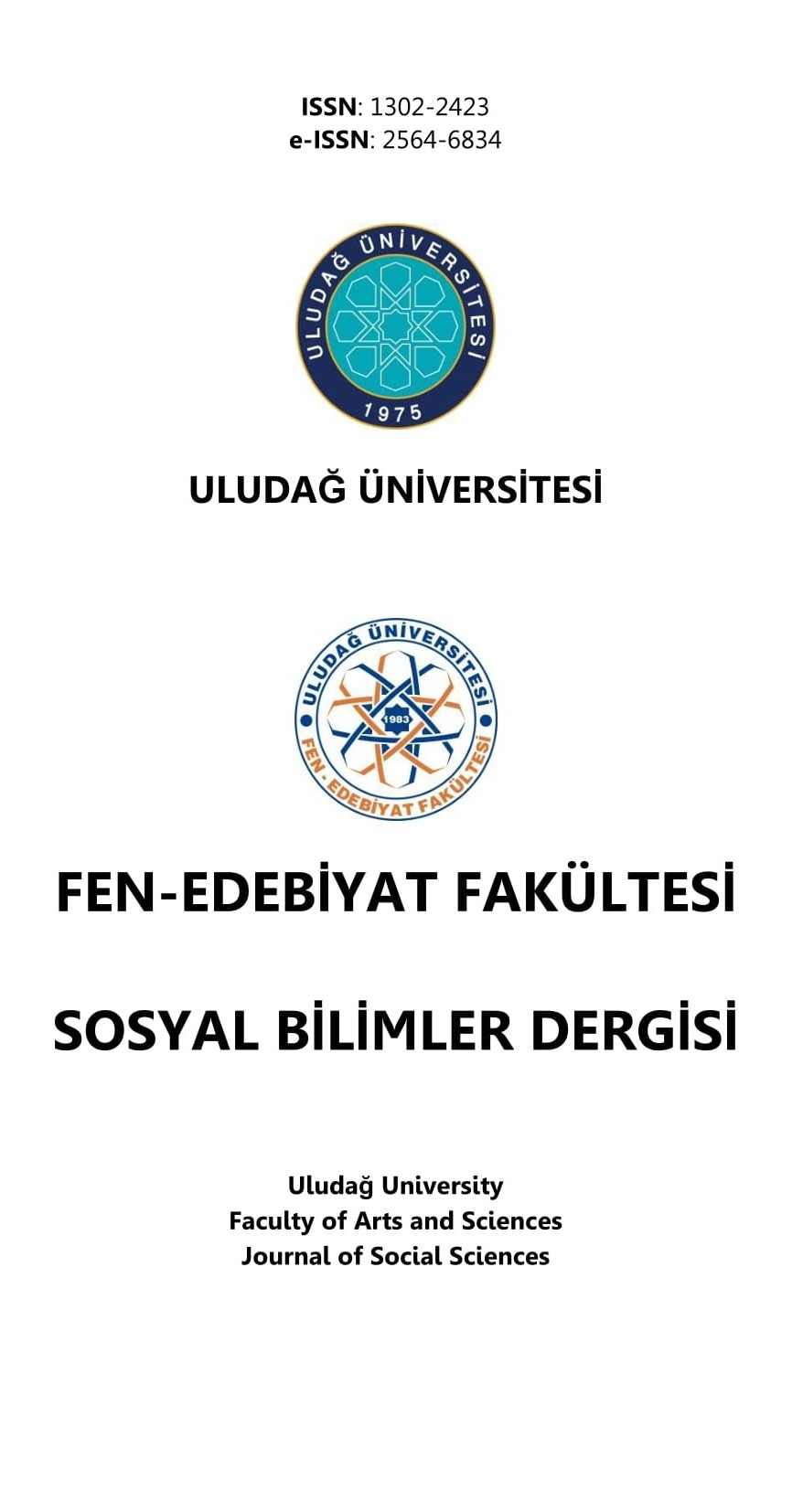Kadın Canavarlar veya Canavar Ötekiler: George Eliot ve Adam Bede’deki Karakteri Hetty Sorrel
Adam Bede, George Eliot, Hetty Sorrel, canavar Öteki, Viktorya dönemi kadını
THE FEMALE MONSTERS OR THE MONSTROUS OTHERS: GEORGE ELIOT AND HER HETTY SORREL IN ADAM BEDE
Adam Bede, George Eliot, Hetty Sorrel, monstrous Other, Victorian woman,
___
- Auerbach, N. (1980). The rise of the fallen woman. Nineteenth-Century Fiction, 35(1), 29-52.
- Austen, Z. (1976). Why feminist critics are angry with George Eliot. College English, 37(6), 549-561.
- Brontē, C. (1993). Villette. Wordsworth.
- Carroll, A. (1989). Tried by earthly fires: Hetty Wesley, Hetty Sorrel, and Adam Bede. Nineteenth-Century Literature, 44(2), 218-224.
- Cohen, J. J. (1996). Introduction. In J.J. Cohen (Ed.), Monster Culture (Seven Theses). Monster Theory: Reading Culture (pp. 3-25), Minnesota University Press.
- Citron, J. A. (1989). Delusions of gender. The Women’s Review of Books, 7(2), 18-19.
- De Traci, R. (2021, September 9). The Curse of Medusa from Greek Mythology. https://www.thoughtco.com/greek-mythology-medusa-1524415
- Diekhoff, J. S. (1936). The happy ending of Adam Bede. ELH, 3(3), 221-227.
- Dolin, T. (2005). George Eliot. Oxford University Press.
- Edwards, L. R. (1972). Women, Energy and Middlemarch. Woman: An Issue, 13(1), 223-238.
- Eliot, G. (1896). Silly novels by lady novelists. Westminster Review, 66, 442-461.
- Eliot, G. (1994). Adam Bede. Penguin Books.
- Fyfe, A. J. (1954). The interpretation of Adam Bede. Nineteenth-Century Fiction, 9(2), 134-139.
- Gilbert S. M. & Gubar, S. (2000). The madwoman in the attic: The woman writer and the nineteenth-century literary imagination. Yale University Press.
- Haldane, E. S. (1927). George Eliot and her times. Appleton and Co.
- Herbert, C. (1975). Preachers and the schemes of nature in Adam Bede. Nineteenth-Century Fiction, 29(4), 412-427.
- Levine, G. (2001). Introduction: George Eliot and the art of realism. In G. Levine (Ed.), The Cambridge Companion to George Eliot (pp. 1-20), Cambridge University Press.
- Manheimer, J. (1979). Murderous mothers: The problem of parenting in the Victorian novel. Feminist Studies, 5(3), 530-546.
- Martin, B. K. (1974). Rescue and marriage in Adam Bede. Studies in English Literature, 12(4), 745-763.
- McDonagh, J. (2001). Child-murder narratives in George Eliot’s Adam Bede: Embedded histories and fictional representation. Nineteenth-Century Literature, 56(2), 228-259.
- Mitchell, J. (1990). George Eliot and the problematic of female beauty. Modern Language Studies, 20(3), 14-28.
- Moers, E. (1977). Literary women. Anchor Books.
- Pinney, T. (1963). Essays of George Eliot. Routledge and Kegan Paul.
- Power, E. (1975). Medieval women. Cambridge University Press.
- Rignall, J. (2000). Oxford reader’s companion to George Eliot. Oxford University Press.
- Tumanov, V. (2011). Mary versus Eve: Paternal uncertainty and the Christian view of women. Neophilologus, 95(4), 507-521.
- Woolf, V. (2021, September 9). Professions for Women. https://www.wheelersburg.net/Downloads/Woolf.pdf
- Başlangıç: 1999
- Yayıncı: Bursa Uludağ Üniversitesi
İÇ SAVAŞIN ÇEMBERİNDE SERAFİMOVİÇ’İN MÜCADELECİ KADINLARI: DEMİR TUFANI
MÜELLİFİ VE TELİF TARİHİ BİLİNMEYEN ARAPÇA-TÜRKÇE BİR MANZUM SÖZLÜK
RUS VİYOLA OKULUNUN KURULUŞU VE GELİŞİMİ: VADİM BORİSOVSKİ
HALİT ZİYA UŞAKLIGİL’İN SANATA DAİR’İNDE TERCÜME ÜZERİNE FİKİRLERİ
Nurtaç ERGÜN ATBAŞI, Koray ÜSTÜN
ALİ BEHCET DEDE: CANA ŞİFA KAHVESİ VE GÖNÜLLERE DEVA MANZUMESİ
KARESİ GAZETESİNDE BANDIRMA (1886-1888)
Harold Pinter’in "Gitgel Dolap" Eserine Yapısalcı Bir Yaklaşım
TÜRK ASILLI ŞAİR EMİR HÜSREV-İ DİHLEVÎ’NİN HİNT KÜLTÜRÜNE VE EDEBİYATINA TESİRLERİ
Mehmet Enes TEMİZ, Mehmet Kemal ÇAKMAKÇI
TÜRKİYE’DE SUÇ COĞRAFYASI ARAŞTIRMALARI: BİR LİTERATÜR DEĞERLENDİRMESİ
